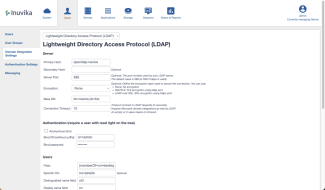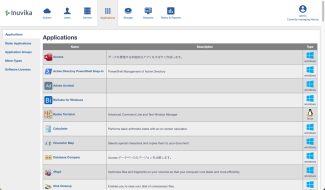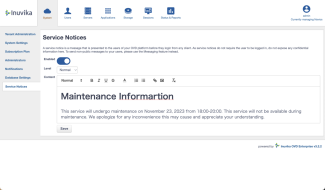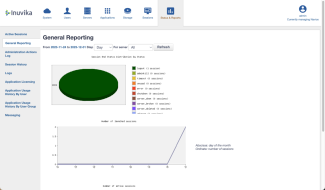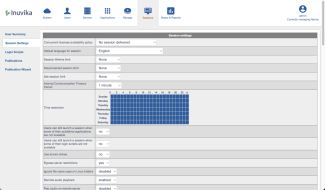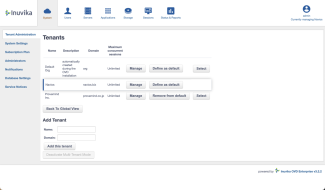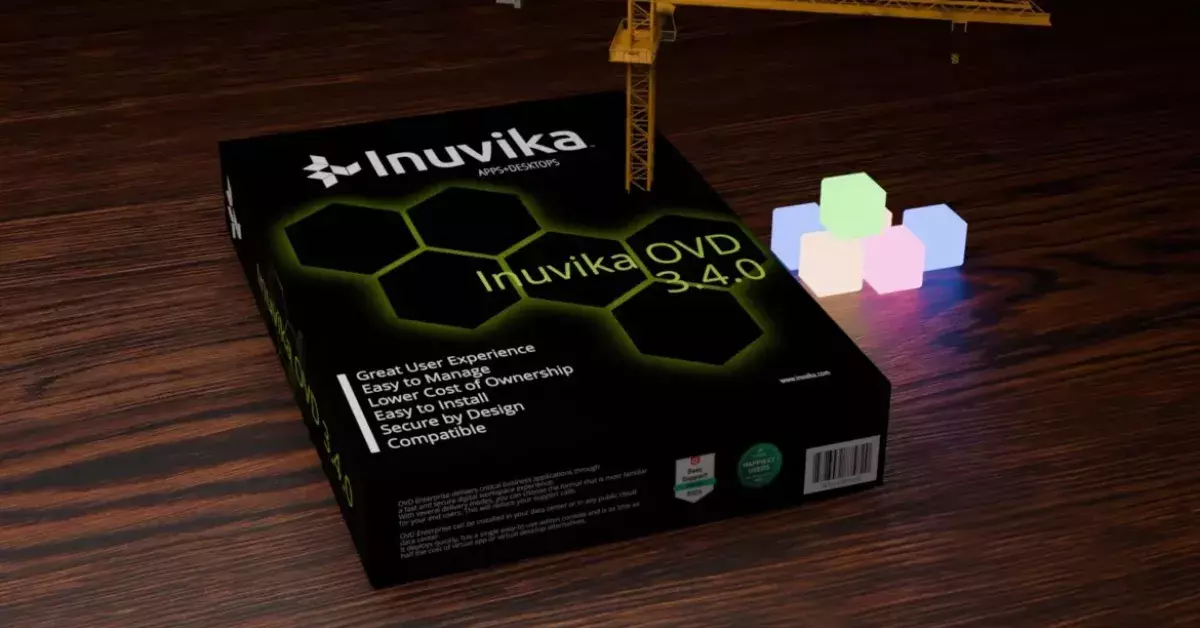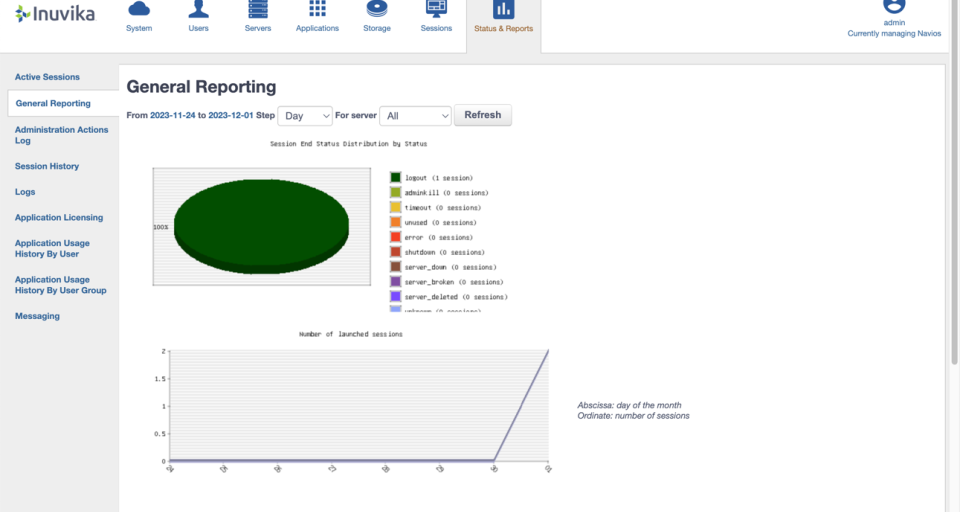
Inuvika Makes Management Easy
OVD Enterprise includes a single Web-based administration console so you won’t have to learn multiple consoles. It’s the only tool you’ll need to manage your OVD environment.
Profile Management and Directory Integration
OVD provides choice for managing profiles and integrating with directory services.
Options for Directory Integration. OVD provides an internal directory service, or integrates with MS Active Directory, or any other LDAP-compliant solution.
Options for Managing User Profiles. Manage user profiles using OVD’s built-in profile manager, FSlogix, MS Roaming Profiles, MS Folder Redirection, and other third party profile management solutions.
Hybrid AD Mode. Support native AD users and services while also supporting a mixture of Linux application users.
Application Management
Publishing apps has never been easier.
Application Dashboard. View all Windows and Linux applications that are available for publication in one convenient list.
Multi-Version Apps. Publish multiple versions of applications for workflows that require specific versions of apps.
Static Applications. Customize specific applications by configuring command line parameters and settings.
Application Groups. Combine applications together and make them available to users as groups of applications.
Software Licensing. Monitor software license data for the applications being served by OVD and view usage rates.
Messaging and Service Notices
Send important notices and actionable alerts to your user community.
Messaging and Service Notices provide a set of tools for communicating with your user community before or after they begin a session. Broadcast important information like maintenance periods, legal terms and conditions, or survey users on topics.
Impactful. Present notices within a dialog box, or as a full-screen with mandatory acknowledgement requirements.
Interactive Messages. Add programmable action buttons with customisable responses to questions.
Track Responses. Track essential statistics, including which users have received and replied to messages.
Compliance. Archive messages and their related statistics for data retention requirements.
Multi-Tenant Compatible. Each OVD tenant can broadcast their own individual messages and notices.
Text Formatting. Easy-to-use message editor panels with support for rich text formatting and HTML content.
Reporting
View current and historical information about your OVD environment.
Active Sessions. View a quick summary of all active user sessions, along with their current status and support functions.
Administration Action Logs. Review and audit all historical administrative actions taken by OVD Administrators.
Session History. Access more detailed session history reports by user. Perform a deeper review of application usage, apps available, storage and other resources used within sessions by users.
Application Licensing. Access information about the current allocation of software licenses to users. Filter by user, time period, and application, with optional export option to CSV.
Application Usage. View detailed usage information about each application within OVD on an individual or aggregate group level basis. Apply multiple filter options and export to CSV.
Message Reports. Search and view data recorded for all OVD Messages issued, including which users have read and acknowledged specific messages, time/date of responses, time/date of delivery and whether the message is awaiting delivery.
Session Preferences
Customize OVD session parameters to suit your needs.
Session Settings. Session settings can be set globally, at the user group level, or individual user level. Finely tune session options like language, session duration limits, idle limits, resource restrictions for Windows and Linux app servers, and much more.
Login Scripting. View and create scripts that will be executed at login on each application server involved in serving applications.
Multi Tenancy
Use one instance of OVD Enterprise to deliver services across multiple domains.
Domain Name. Set one or multiple unique domain names for tenants and create a customized user experience.
Shared or Dedicated Resource Options. Assign dedicated or shared services to tenants based on their needs.
Delegated Administration. Assign sub-administrators to manage one or more tenants.
User Shadowing
Live and interactive support for users.
Initiate shadow sessions with active users to assist in remote application support and troubleshooting. Shadowing takes extensive security measures to protect user privacy while still providing the ability to interact with to any user session or application in use.
User Privacy and Consent. Users are presented with an alert notice and must accept the request before admins can initiate a shadow session.
View and Control. OVD Admins can view the Windows and Linux applications currently running in an active session. Inuvika’s privacy control limits viewing to only the active OVD applications available to the user.
Integrated. Shadowing is included as standard in OVD Enterprise and does not require any additional purchases or installation.
Multi-Client Support. Shadowing is supported on the Inuvika EDC, EMC, and Web clients without the need for installing additional applications.
